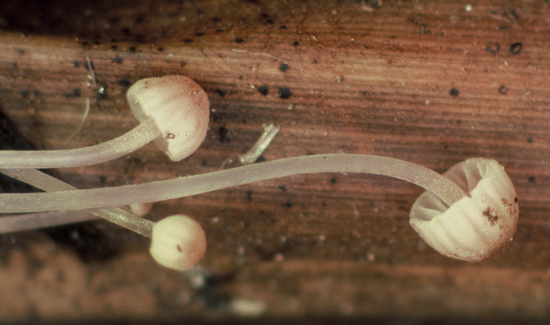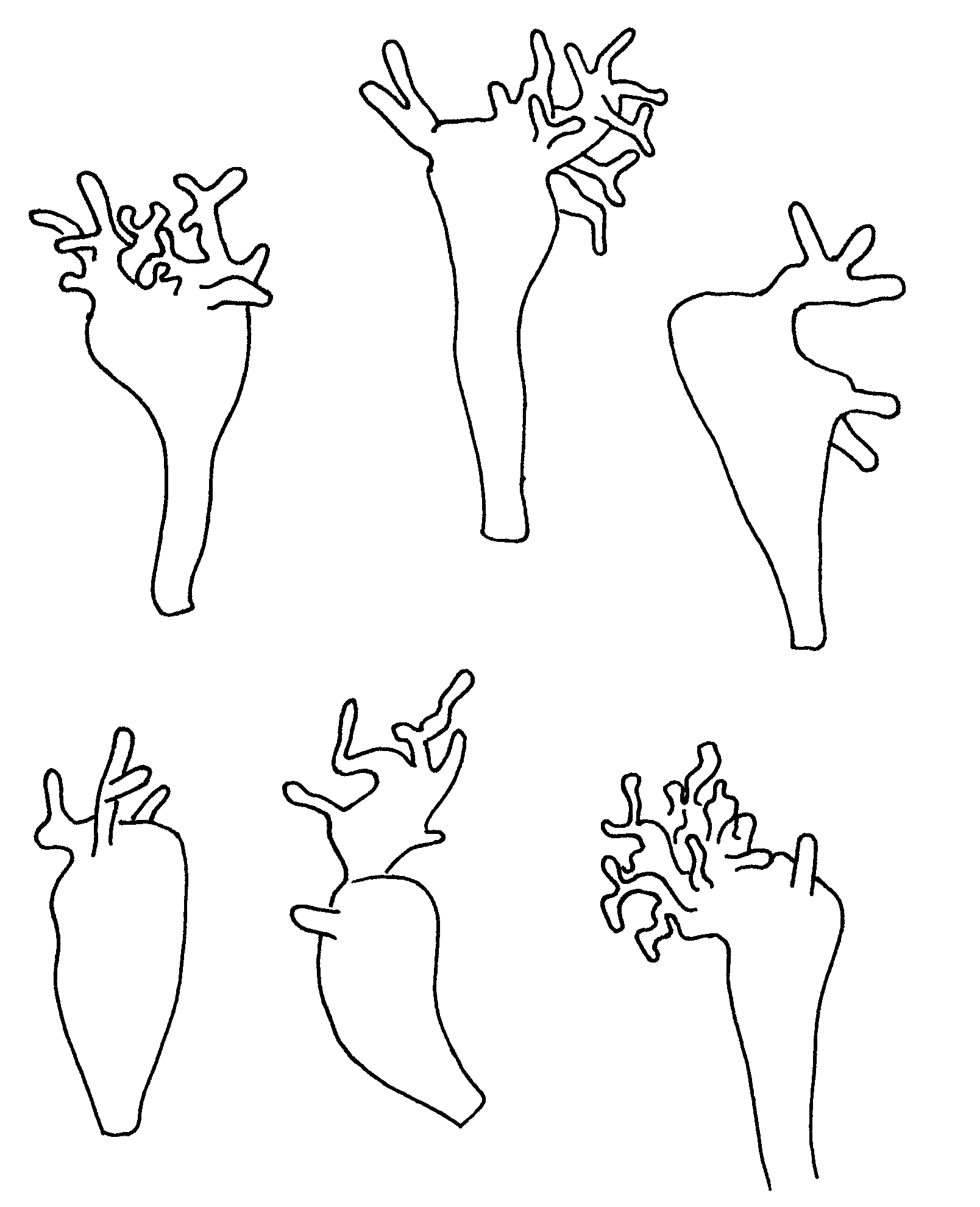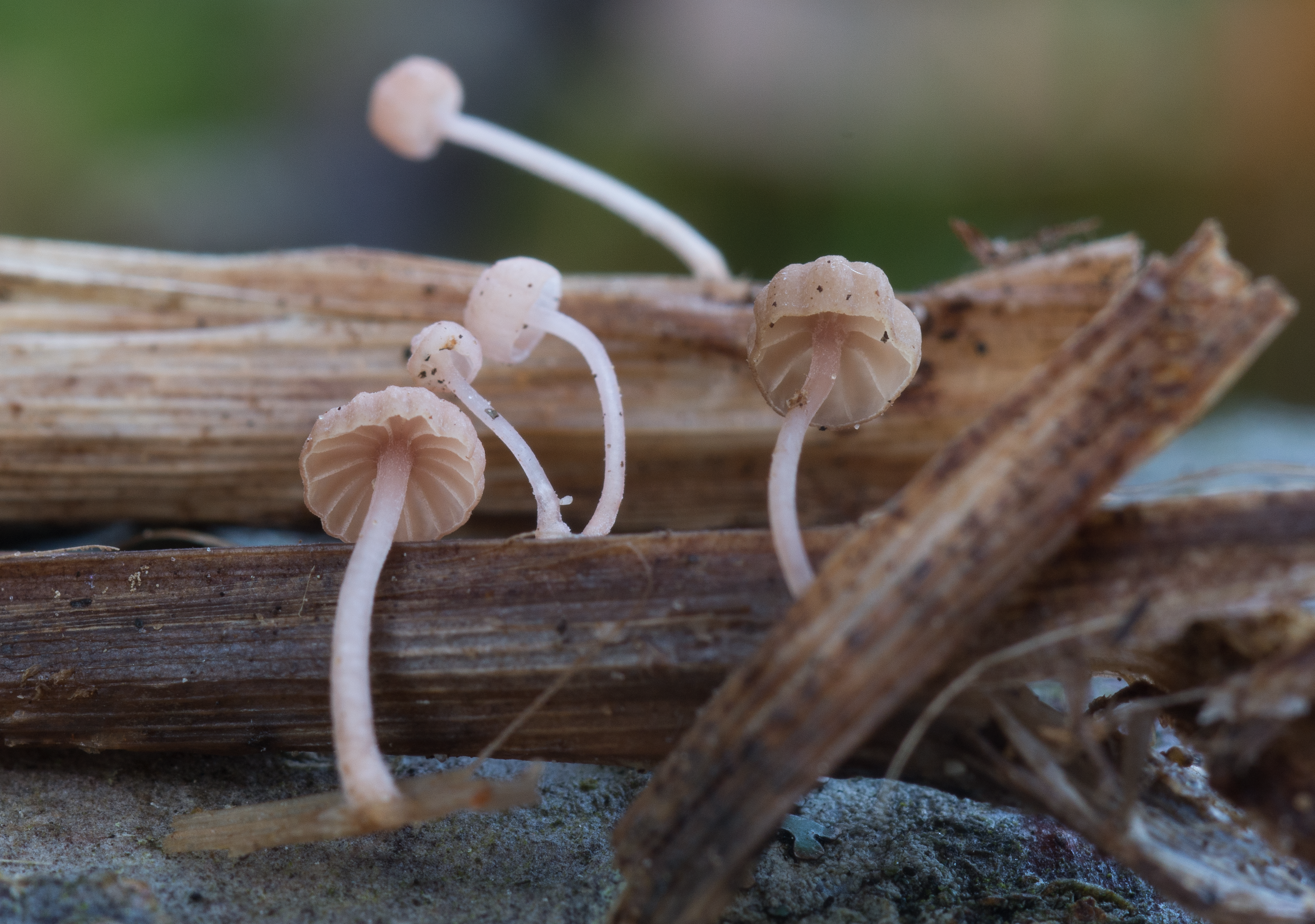Mycena riparia
Mycena riparia
Description
Cheilocystidia
Cap 1-4 mm across, hemispherical to convex, ±depressed or papillate, shallowly sulcate, translucent-striate, pruinose, glabrescent, pink to very pale brown with a pinkish shade, darker in the centre; the margin whitish. Gills 8-10 reaching the stem, broadly adnate, somewhat decurrent with a short tooth, incarnate to whitish with pure white edge. Stem 3-25 x 0.2-0.5 mm cartilaginous, cylindrical, equal, minutely puberulous, incarnate, whitish or grey, becoming somewhat yellowish from the base with age; the base covered with short, white fibrils. Odour indistinctive. Basidia 24-27 x 7 µm, clavate, 4-spored. Spores 7.8- 10.5 x 3.8-4.5 µm, Q = 1.8-2.5, Qav ˜ 2.2, pip-shaped, amyloid. Cheilocystidia 18-26 x 7-15 µm, forming a sterile band, clavate or somewhat irregularly shaped, covered with fairly few, more or less unevenly spaced, simple to branched, straight to somewhat curved excrescences 1-7 x 1-1.5 µm. Pleurocystidia absent. Lamellar trama dextrinoid. Hyphae of the pileipellis 3-6.5 µm wide, diverticulate. Hyphae of the cortical layer of the stem 2-2.5 µm wide, diverticulate; caulocystidia abundant at the base of the stem, clavate to subglobose, densely diverticulate. Clamps absent.
Ecology and distribution
On decaying Scirpus and Carex in wet areas. Autumn. Very rare in South-Norway.


